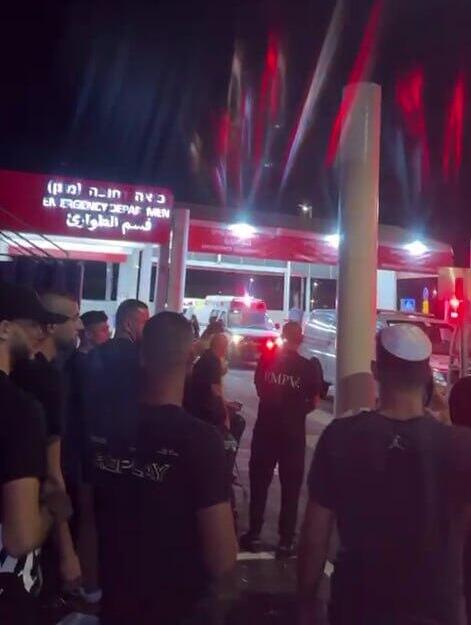Getting your Trinity Audio player ready...
Dozens of casualties have been sustained from a drone strike in the Binyamin area of northern Israel; it is the highest number of casualties in a single event since the October 7 massacre.
Magen David Adom Director General Eli Bin said that at least 67 people were injured Sunday evening from a drone strike launched by Hezbollah that exploded near Binyamina in northern Israel. Four of the injured are defined as critical, five others were seriously injured and many others are in moderate condition. MDA teams evacuated 39 casualties and military and other ambulances evacuated another 25.
Drone strike near Binyamina
Emek Medical Center in Afula declared a mass-casualty event. Some of the injured were evacuated by helicopter to Sheba Hospital in Tel Hashomer and Rambam Hospital in Haifa, and others were also evacuated to Hillel Yaffe Hospital in Hadera and Emek Hospital in Afula.
Hezbollah launched two UAVs. Air defense systems intercepted one of them after alarms in the Western Galilee, including in Acre and Nahariya. But one of the two UAVs penetrated deep into Israel, and the explosion occurred in the Binyamins area without triggering an alarm.
"There was a crazy boom, without any warning," said an eyewitness.
An initial IDF investigation into the drone strike revealed two drones infiltrated Israeli airspace from Lebanon via the sea, the first of which was intercepted. The second was pursued by Israeli Air Force units but was lost at some point before it detonated. The military is now looking into the reason for this and the lack of alarms sounding in the area.
Less than an hour later, the Israeli Air Force intercepted a UAV that was launched from Lebanon in the northern naval area, according to the IDF.
Hezbollah claimed responsibility for the mass-casualty attack, which occurred in the Ramot Menashe area, and claimed that it was carried out in response to IDF attacks in Lebanon and in particular in Beirut.
"Hezbollah can still protect Lebanon and the people," the terrorist organization's statement said. A Hezbollah source quoted in Al-Jazeera claimed that the terror organization launched "swarms of UAVs" in the attack. "Hezbollah's capabilities are still strong and capable of reaching deep into Israel," the source claimed.
The Arabic-language Sky News network reported that the UAV was "launched under the cover of a rocket barrage into the Galilee."
The Saudi channel Al-Hadath cited anonymous sources claimed that the UAV in the attack "launched a missile before exploding." It is not the first time such a claim has been mdade. In May, Hezbollah claimed that it attacked for the first time in the Metula region with a UAV "equipped with S5 missiles" - which were launched before the UAV exploded on its target.
Evacuating injured from drone attack to Hillel Yaffe Medical Center
(Video: Gil Nehushtan, Lior El-Hai)
The serious incident comes in the wake of several other serious injuries recorded by Hezbollah's incessant barrages on Israeli communities at the same time as the battles that are currently taking place in the IDF's limited ground operation in southern Lebanon. On Wednesday, Dvir Sharvit, 43, and Revital Yehud, 45, were killed by a direct hit in Kiryat Shmona.
Israel is also still struggling to deal with the threat of Hezbollah's UAVs, and an example of this came on the eve of Yom Kippur with the direct hit of a UAV launched from Lebanon on a sheltered housing facility for the elderly in Herzliya, in which there were no casualties, after the residents followed the directives of the Home Front Command.
Get the Ynetnews app on your smartphone:
First published: 19:56, 10.13.24







